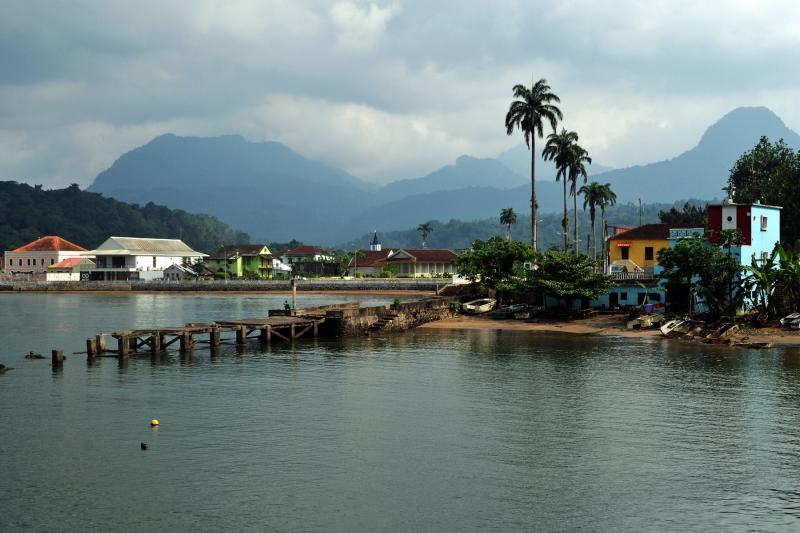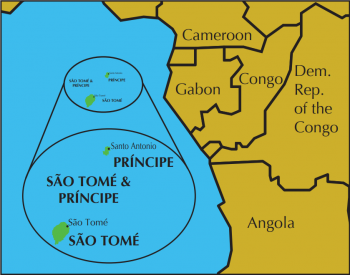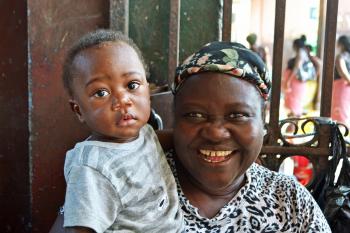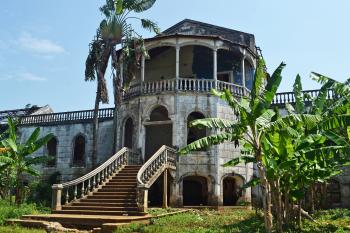Exploring the island paradise of São Tomé & Príncipe
This article appears on page 26 of the January 2021 issue.
We’re all eager for the pandemic to end so we can start roaming the globe again, and, undoubtedly, we’ve all been making plans in our heads while we’ve been cooped up. If those plans involve travel to the Iberian Peninsula, here’s a wild idea: why not celebrate getting out of stir by going a little farther, to paradise?
After a May 2019 stay in Portugal, I tagged on a 10-day solo visit to what has become my personal paradise, the 2-island nation of São Tomé & Príncipe (STP), Africa’s second-smallest country.
And it’s easier to reach than you might think. STP gained independence from Portugal in 1975 and ties are still close, so Lisbon is by far the easiest gateway to the islands. Leave on the morning TAP Air Portugal flight, and you’ll be in STP for dinner.
Starting in São Tomé
Although small and remote, STP has plenty to reward the visitor. It is a perfect place to relax in a part of the world far from the traveling hordes. You will certainly be a novelty, not just one more tourist.
Flights arrive in São Tomé city, the charmingly languid capital. Downtown São Tomé extends along its bay and is filled with colonial-era Portuguese architecture. A stroll by the bay leads to a 16th-century fort housing the National Museum and CACAU, the city’s cultural center, including an art gallery and restaurant. (Try to time your visit to take in a cultural show.)
The city also is home to two markets that pour out into the streets — streets where you can find good restaurants like Café Camões and Portuguese-style bakeries like Pastelaria Central (both located on Rua de Angola).
Along the coast, natural beauty, fishing villages, waterfalls and beaches lined with palms and dugout canoes beckon. Some of São Tomé’s most glorious beaches can be found in the south.
If you can tear yourself away from having gorgeous beaches virtually to yourself, visit Ilhéu das Rolas just off the coast, the tiny island where the equator crosses STP territory. (I’d recommend a swim on the equator followed by some grilled fish on the beach.)
Luscious landscapes
The scenery on the way south reaches a crescendo at São Tomé’s most spectacular mountain, awe-inspiring Pico Cão Grande, a tower of volcanic rock jutting more than 2,000 feet above the forest and palm plantations.
In the island’s interior lies a dramatic landscape of mountains and waterfalls. I took in the orchids and herbs (among other marvels) at the Bom Sucesso Botanical Garden before heading off on a hike through the pristine jungle.
All over STP, colonial history is on display in its towns and the many roças, or cacao plantations. After STP’s independence from Portugal, which had established these plantations during its long rule, many roças deteriorated, though people still live in what were once the slave quarters. I found the dereliction at some of the roças, as the jungle reclaims them, evocative.
At some, however, production is being revived. Several historic roças are open for visits, like the huge Roça Agostinho Neto or Roça Monte Café, both on São Tomé. At Monte Café, an on-site museum and a sampling of the plantation-grown coffee and cacao round out the experience.
Having a gourmet lunch at Roça São João (S. João do Angolares) on São Tomé is a must. Meeting the internationally renowned chef, who grew up on the plantation, and enjoying the superb food made this a worthwhile stop.
You won’t be in STP long before you learn the term “léve-léve.” Roughly meaning “easy-easy,” it perfectly describes the peaceful, slow-going atmosphere and the friendly spirit of the people.
On to Príncipe
Just when I thought it couldn’t get any better, a 35-minute hop by plane took me from São Tomé to the postcard paradise of Príncipe, where the entire island is a UNESCO Biosphere Reserve. A “Jurassic Park” landscape, plus roças and even more pristine beaches, awaited.
The tranquility and léve-léve of the friendly residents of tiny Príncipe made the already laid-back São Tomé look frenetic by comparison.
STP’s cuisine is based on a wide selection of fruits, herbs and — surprise, surprise — fresh seafood. Strangely, though it was once one of the biggest cacao exporters in the world, only recently has chocolate been made on the islands.
Italian Claudio Corallo took over an abandoned cacao plantation on Príncipe in the 1990s. Since then, he has opened a small factory in São Tomé city, where he makes what has been called the best chocolate in the world. A stop at the Corallo chocolate factory (Ave. Marginal 12 de Julho) for a tasting tour is the ideal way to end your visit to these islands.
Making arrangements
A web search led me to two travel agents: Fernando Bragança at Imperial-STP (www.imperial-stp.st) and Nilton Paquete at BioTour STP (www.facebook.com/BiotourSTP). Fernando and Nilton (a jungle-hiking guide extraordinaire) collaborate with each other, and both were instrumental in helping me organize my accommodations, local transportation and some activities. Both also speak excellent English; all communication with them was prompt, reliable and courteous.
My visit to STP cost about $2,000, which covered accommodations, transportation, including round-trip air from São Tomé to Príncipe, all meals except dinners, and scheduled activities.
In São Tomé city, I stayed at the appropriately named Sweet Guest House (sweetguesthouse.com), and elsewhere on the island I stayed at Mucumbli Lodge and Roça Sao João. I highly recommend all three.
On Príncipe, I stayed at the simple but comfortable Residencial Apresentação.
My accommodations were all immaculate and moderately priced, though both islands have luxurious beach lodges and resorts for those more well heeled than I.
Fernando served as my excellent driver on São Tomé. (He and Nilton also provide guide services if requested.) On São Tomé, car rental is also possible; roads are adequate, and traffic is light.
On Príncipe, transport by car and guide can also be arranged, but my guest house arranged a “motor boy” for me. I just climbed on the back of his motorbike and off we went, allowing me to explore the island at my leisure. I had no worries about my driver. The convivial young man who picked me up was léve-léve personified.
At the time of my visit, ATMs were not connected internationally, so I’d recommend taking cash to exchange for the local currency, the dobra. Fernando was supremely helpful in making these exchanges for me.
For stays under 15 days, STP does not require visas for US or Canadian passport holders, but proof of yellow fever vaccination is required.
English is taught in the island schools, but I was surprised at how much English I encountered. Knowing some Portuguese would enhance your visit, though.
When we can again wander the planet at will, we can all use a little time in paradise. Be prepared to return from STP with your blood pressure lowered, a lifetime of memories, and a suitcase full of chocolate.
STP is a special place, and I am happy to answer questions or share further info with anyone interested (blakew@flash.net).




